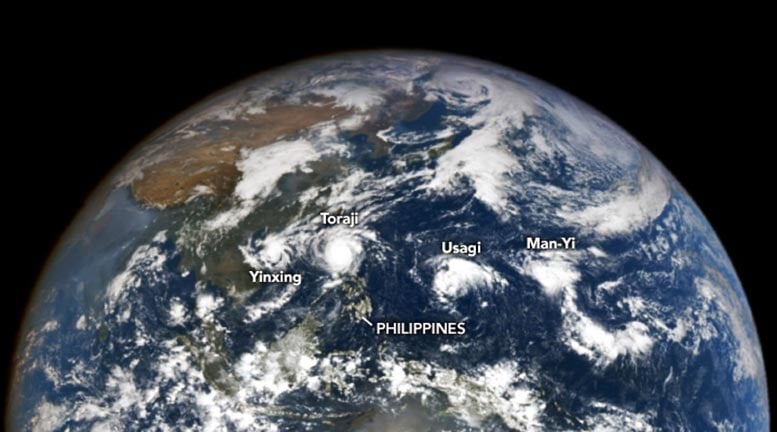The Philippines has faced relentless typhoon activity this year, underscoring its status as one of the world’s most disaster-prone nations.
Recent storms such as Tropical Storm Trami and Typhoon Kong-Rey wreaked havoc in late October, leaving a trail of destruction across Luzon, the country’s largest and most populous island. These storms caused deadly flooding and landslides, displacing thousands and compounding the already significant socio-economic challenges in the region.
Typhoon Season: A Year-Round ThreatThe Western Pacific typhoon season spans the entire year, but activity typically peaks between May and October, with November often marking the tail end of the season. Historical data (1991–2000) shows an average of three named storms forming in November, with at least one intensifying into a super typhoon, defined by sustained winds exceeding 240 kilometers per hour.In 2024, the Pacific has seen an above-average number of storms, many of which have followed trajectories toward the Philippines.
This increased activity reflects both natural climate variability and the growing influence of climate change, which has been linked to stronger and more frequent typhoons.Tropical Storm Trami and Typhoon Kong-ReyTropical Storm Trami brought days of torrential rain, leading to widespread flooding in low-lying areas. Rivers swelled beyond capacity, inundating homes and infrastructure and leaving communities stranded without basic supplies.
Typhoon Kong-Rey, one of the most powerful storms of the year, caused catastrophic landslides in mountainous regions. The deluge destabilized slopes, burying entire villages under mud and debris. Emergency responders faced significant challenges in reaching remote areas, further complicating rescue and relief efforts.
These storms highlight the Philippines’ vulnerability to typhoon-related disasters, particularly in densely populated and economically disadvantaged regions.Economic and Humanitarian ImpactThe impacts of typhoons on the Philippines are staggering:Loss of Lives and Livelihoods: Dozens of fatalities have been reported, with many more injured or missing.
Farmers and fishermen, already among the most marginalized groups, suffered massive losses as fields and coastal areas were destroyed.Damage to Infrastructure: Roads, bridges, schools, and hospitals have been severely damaged or destroyed, disrupting transportation and essential services.Displacement and Health Risks: Thousands of families have been displaced, seeking refuge in overcrowded evacuation centers where the risk of disease outbreaks looms large.The cost of rebuilding and recovery is expected to run into billions of pesos, placing immense pressure on the government and international aid organizations.Addressing the Growing ThreatThe increasing frequency and intensity of typhoons necessitate urgent action on multiple fronts:Disaster Preparedness: Strengthening early warning systems, community evacuation plans, and stockpiles of emergency supplies.
Infrastructure Resilience: Investing in typhoon-resistant infrastructure, particularly in flood-prone and coastal areas.Climate Adaptation: Implementing long-term strategies to mitigate the effects of climate change, such as reforestation, wetland restoration, and sustainable urban planning.
A Regional ChallengeThe Philippines is not alone in facing the brunt of Pacific typhoons. Neighboring countries like Vietnam, China, and Japan also contend with these powerful storms, highlighting the need for regional cooperation. Sharing data, resources, and best practices can strengthen collective resilience against the growing threat of extreme weather events.Looking AheadAs the typhoon season winds down, November remains a critical period for monitoring potential storms.
The Philippines’ ability to recover from this year’s devastation and prepare for future challenges will depend on its commitment to building resilience, mobilizing resources, and leveraging international partnerships.The lessons from storms like Trami and Kong-Rey underscore the urgent need for a proactive approach to disaster risk management. With climate change poised to exacerbate typhoon activity, the Philippines must act decisively to safeguard its people, economy, and future.

















+ There are no comments
Add yours